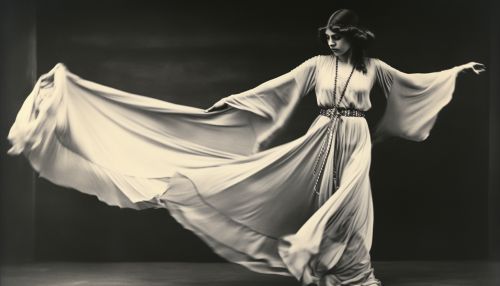Isadora Duncan
Early Life
Isadora Duncan was born on May 26, 1877, in San Francisco, California. She was the youngest of four children born to Joseph Charles Duncan, a banker, mining engineer and connoisseur of the arts, and Mary Isadora Gray, a music teacher. Her father's financial instability and her parents' eventual divorce in 1880 meant that Duncan and her siblings were raised primarily by her mother and her mother's family.
Education and Training
Duncan received her early education in the arts from her mother, who taught her to play the piano and introduced her to the works of great poets such as William Shakespeare and Lord Byron. She also began to develop her own approach to dance, rejecting the rigidity of traditional ballet and instead favoring natural movements that were inspired by the world around her.
Career
Duncan's career as a dancer began in her teens when she started teaching dance classes in her home. She moved to Chicago in 1896, where she performed in various productions and continued to develop her unique style of dance. In 1898, she moved to New York, where she performed in the theater and continued to teach dance.
In 1902, Duncan moved to Europe, where she found greater acceptance of her innovative approach to dance. She performed throughout Europe, earning acclaim for her performances in such cities as Paris, London, and Berlin. Her performances were characterized by her flowing costumes, bare feet, and natural movements, which were a stark contrast to the structured and formal style of ballet that was popular at the time.
Duncan's influence on the world of dance was profound. She is often credited with being the mother of modern dance, and her innovative approach to movement and performance has had a lasting impact on the art form. Her emphasis on natural movement and emotion in dance has been a major influence on many dancers and choreographers who have followed in her footsteps.
Personal Life
Duncan's personal life was marked by tragedy and controversy. She had two children, both of whom died in a tragic accident in 1913. She was also known for her unconventional lifestyle, which included a series of high-profile romances and a disregard for societal norms. Despite these challenges, Duncan remained dedicated to her art and continued to perform and teach dance until her death in 1927.
Legacy
Duncan's legacy in the world of dance is significant. Her innovative approach to movement and performance has had a lasting impact on the art form, and she is often credited with being the mother of modern dance. Her emphasis on natural movement and emotion in dance has been a major influence on many dancers and choreographers who have followed in her footsteps.


